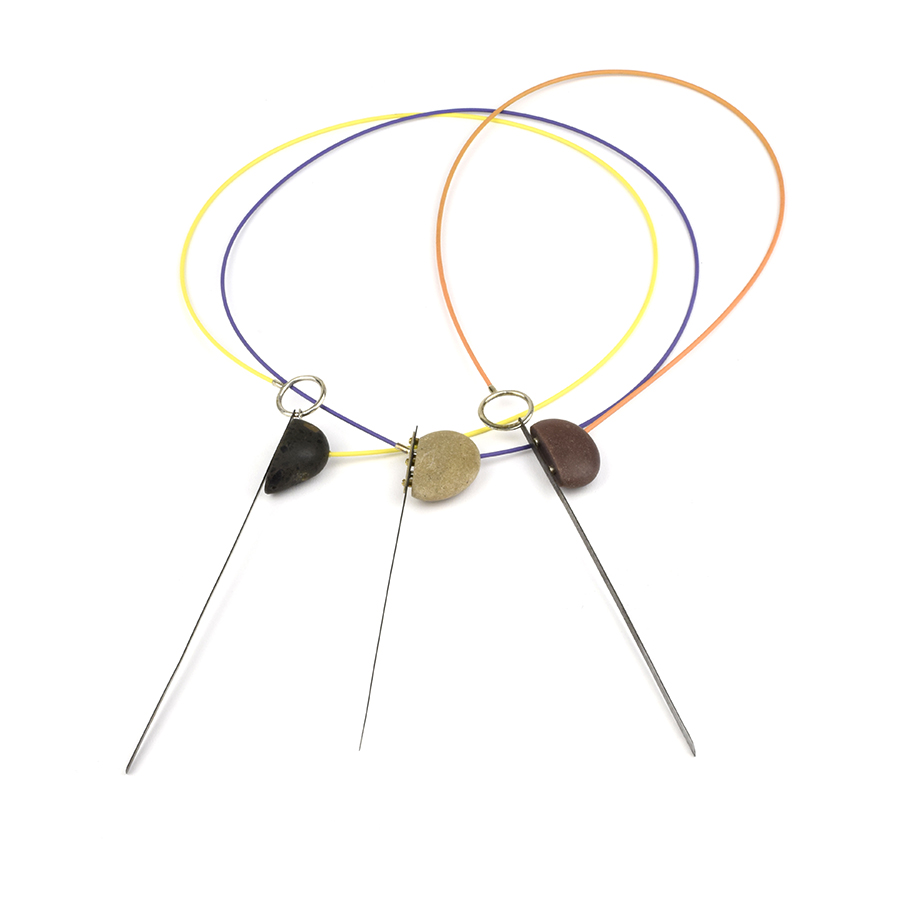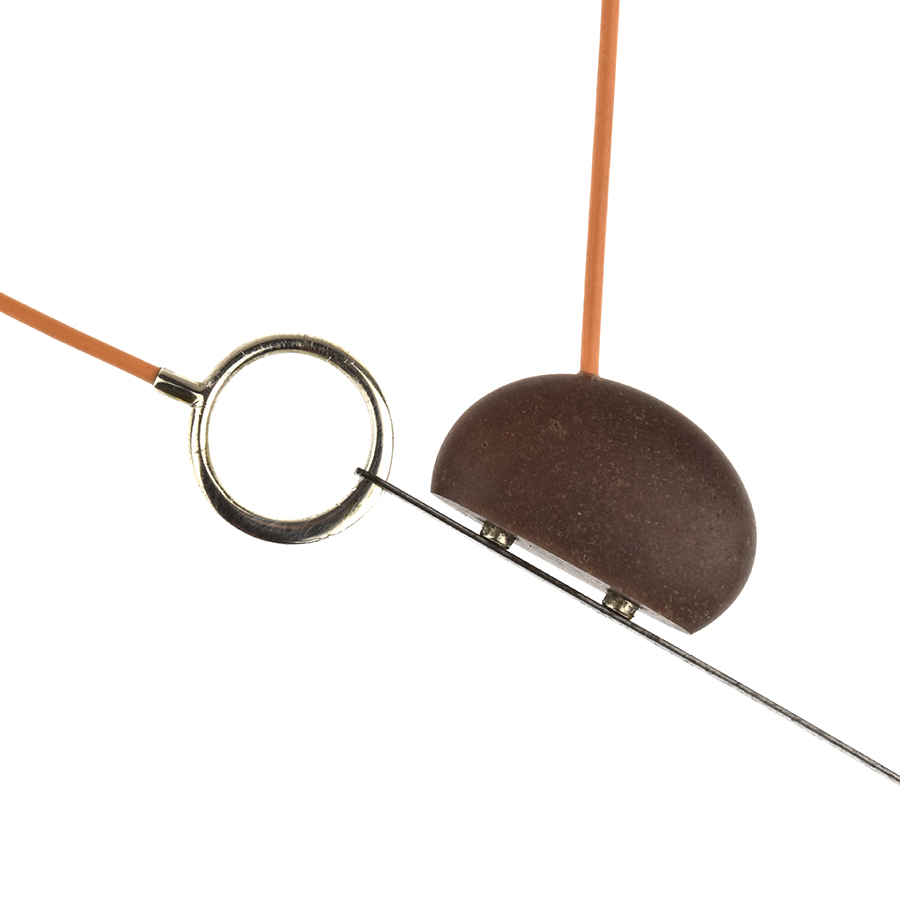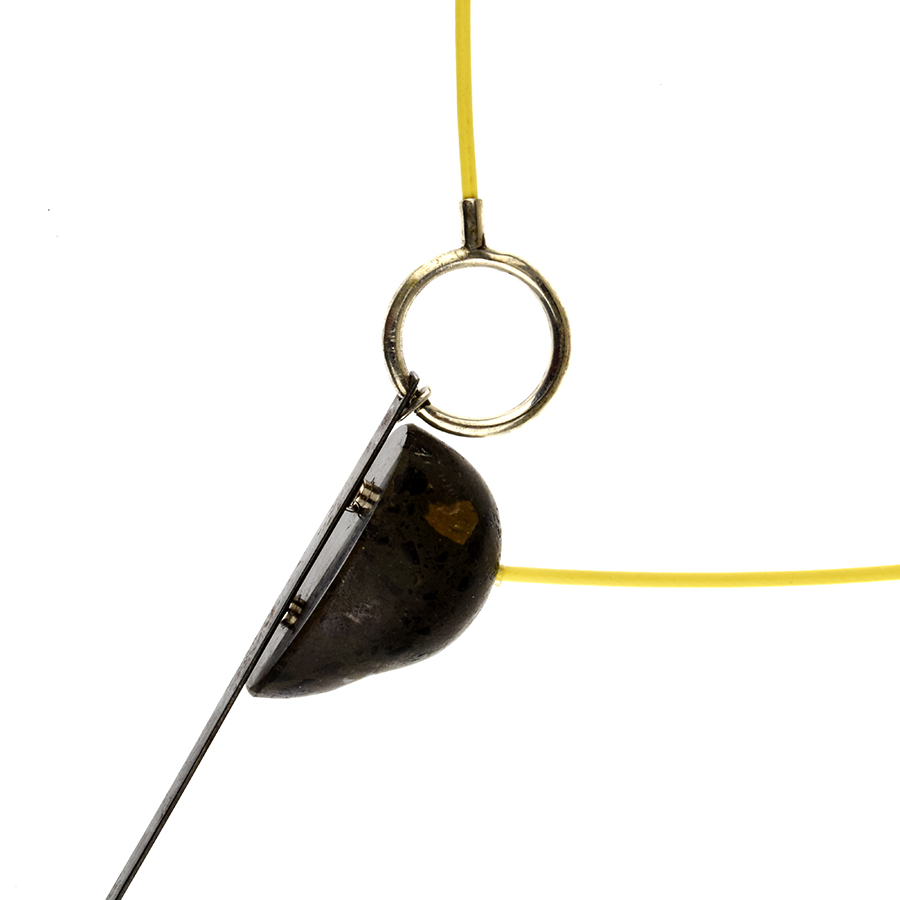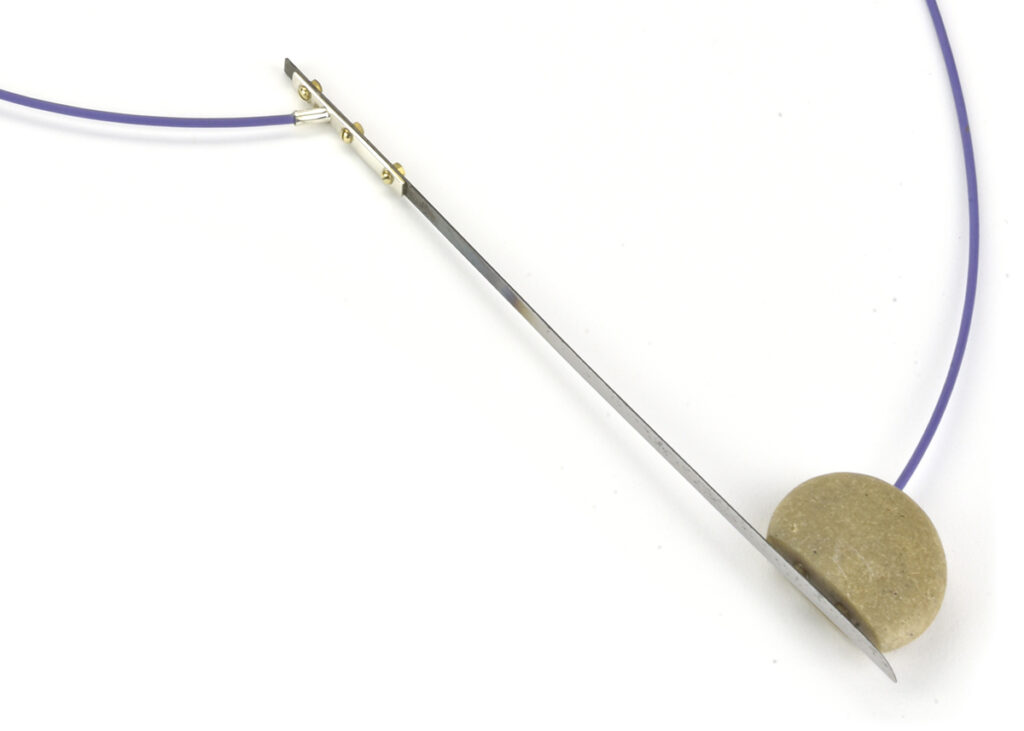
Stone, found road-sweeping bristles, silver, brass, steel cable, rubber.
In 1992, I began to notice lines of steel on the street. Having just moved from the wilds of west Wales to an urban environment in the east Midlands to study for my degree, I was fascinated by the different shape, smell, sound and feel of the place. Of place. The habit of rescuing small fragments of both natural and man-made flotsam from the coastline had been replaced by amassing urban objets-trouves.
Among the hex-nuts, washers and assorted fragments of plastic and rubber were these elegant strips of high-carbon steel. Less than a millimetre thick, 3 wide and anything from around 80 to 200 in length, they are sharp, burred and square at one end, rounded into a shiny butter-knife curve at the other. Smoothed by the incessant abrasions of street and kerb as it spins, round and round, flinging crisp-packets, single gloves and lolly-sticks cart-wards until one day – Ping! – it snaps from its parent road-sweeping brush and in turn is mindlessly jettisoned onto the concrete.
I have quite the collection.

Made from high-carbon steel and having been work-hardened over time, they are resistant to forming; very springy, so do not bend easily and immensely hard, so tough to drill by hand. This didn’t stop me from wrestling some of them into bracelets initially, riveted together with scraps of silver and gold. Precious metals, all.
During a trip to Barcelona in 2017 (five bristles heavier on the way home) I became interested by the juxtaposition of city and sea and how the culture of each bled into the other; there was no distinct line. Tidal defences 100 yards off Barceloneta beach jutted from the sea at angles like the tips of earthquaked buildings, whilst looking west the same shapes stock and sell the ocean lifestyle. It is in these blurred interstitials where the senses are most heightened, especially away from the humdrum of home. A Barcelona bristle is different from a Devon bristle, right?

Wherever we are, we look with the same eyes; what and how we see might change, but even though the formal qualities of a pebble and a street-sweeping bristle may be very different from each other, my impulse to hoard each comes from a similar place – that basic human place that wants to fulfil two existential needs; firstly to make and secondly to communicate with each other about what we make. By connecting these two seemingly disparate and unrelated elements, these neckpieces attempt to harmonise our seemingly conflicted desires and preferences.

So many questions seem to me to be fundamentally divisive, which I find at odds with a culture which claims – or at least aims – to be inclusive; ‘dogs or cats’, ‘white or black’, ‘male or female’, ‘town or country’, ‘city or beach’. It’s ok to be evasive, it’s ok to say ‘both’ or ‘all of the above’ and it’s ok to not answer stupid questions if you don’t want to. Dogs every time though, just for the record.